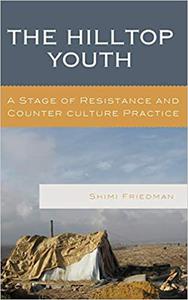
 |
 The Last Resort: A Chronicle of Paradise, Profit, and Peril at the Beach by Sarah Stodola English | June 28th, 2022 | ISBN: 0062951629 | 352 pages | True EPUB | 10.15 MB A captivating exploration of beach resort culture-from its roots in fashionable society to its undervalued role in today's world economy-as the travel industry approaches a climate reckoning
 The Kabbalah of Light: Ancient Practices to Ignite the Imagination and Illuminate the Soul by Catherine Shainberg English | July 5th, 2022 | ISBN: 1644114747 | 352 pages | True EPUB | 1.68 MB * Shares 159 short exercises and practices to tap instantly into your subconscious mind and receive answers to your most important questions  The "I Love My Air Fryer" Three-Step Recipe Book: From Cinnamon Cereal French Toast Sticks to Southern Fried Chicken Legs, 175 Easy Recipes Made in Three Quick Steps ("I Love My") by Michelle Fagone English | June 28th, 2022 | ISBN: 1507219156 | 224 pages | True EPUB | 97.23 MB Delicious recipes as easy as one, two, three, with the quickest 175 recipes designed for your favorite kitchen appliance-the Air Fryer.  The Hundred Days Offensive: The History of the Final Campaign of World War I by Charles River Editors English | March 28, 2015 | ISBN: 1511488301 | 60 pages | EPUB | 2.10 Mb *Includes pictures *Includes online resources and a bibliography for further reading *Includes a table of contents "No compromise on the main purpose; no peace till victory; no pact with unrepentant wrong - that is the Declaration of July 4th, 1918." - Winston Churchill, a month prior to the Hundred Days Offensive World War I, also known in its time as the "Great War" or the "War to End all Wars", was an unprecedented bloodbath in terms of its sheer scale. Fought by men who hailed from all corners of the globe, it saw millions of soldiers do battle in brutal assaults of attrition which dragged on for months with little to no respite. Tens of millions of artillery shells and untold hundreds of millions of rifle and machine gun bullets were fired in a conflict that demonstrated man's capacity to kill each other on a heretofore unprecedented scale, and as always, such a war brought about technological innovation at a rate that made the boom of the Industrial Revolution seem stagnant. As a result, World War I was the first truly industrial war, and it created a paradigm which reached its zenith with World War II and towards which virtually all equipment, innovation and training were dedicated throughout the Cold War and the remainder of the 20th century. To this day, modern warfare remains synonymous with tanks and mass infantry battles, although a confrontation of this nature has not occurred (except briefly during Operation Desert Storm) since World War II. For much of 1917, things went the Germans' way. With the Bolshevik Revolution underway, the Germans were able to move soldiers to the Western front as the Russians quit the war. Moreover, the Allied powers had failed badly in its Nivelle Offensive in May 1917 and suffered a defeat in November against at the Battle of Caporetto in Slovenia. Unbelievably, the French and British had not bothered to coordinate their commands until after those defeats: they finally formed a Supreme Council to coordinate their armies' movements and strategies. Despite those successes, when the United States joined the war in April 1917, it began mobilizing 4 million soldiers to join the war. The Central Powers knew that it would take months before the United States could land a substantial number of troops in Europe to join the fighting, and the Germans hoped to force the Allied powers to quit before the United States could make a difference. Thus, the Germans' Spring Offensive began in March 1918, using new infantry tactics to move on the most lightly defended points of the Allied trenches. The Germans quickly obtained a breakthrough and broke the Allied lines, pushing the Allied forces back nearly 40 miles, and the Germans were once again within less than 100 miles of Paris. Once again, however, the Allied powers halted the Germans' drive, with the help of reinforcing American and Australian troops. The Germans were right back where they started by July 1918, at which time about 10,000 Americans were arriving in France each day. The Allied powers began a counteroffensive known as the Hundred Days Offensive in August 1918 that was highly successful in pushing the Germans backward. In September, Bulgaria reached a separate armistice with the Allied powers, ceding control of the Balkans and cutting off German supplies. The defeated Ottoman Empire surrendered in late October. As the fortunes of the Central Powers waned, several lands in Austria-Hungary's empire began declaring independence. Finally, in November the German Kaiser Wilhelm II was forced into exile, and the Germans reached an armistice with the Allied powers at 11:00 a.m. on November 11, 1918. World War I had finally ended. The Hundred Days Offensive: The History of the Final Campaign of World War I analyzes the last and bloodiest campaign of the war. Along with pictures of important people, places, and events, you will learn about Hundred Days Offensive like never before, in no time at all.  Shimi Friedman, "The Hilltop Youth: A Stage of Resistance and Counter culture Practice " English | ISBN: 1498560946 | 2017 | 112 pages | PDF | 958 KB For more than a decade Israeli society has been witness to the appearance of a new social group, the Hilltop Youth. In the years following the Israeli government's disengagement from the Gaza program in 2005 and the subsequent destruction of settlements in the Gaza Strip, youth and young families have set up settlements on the hilltops of Judea and Samaria and have demonstrated violent, anti-establishment resistance to the state, the IDF, and the police. The appearance of the Hilltop Youth marks a new chapter in the narrative of the Israeli-Palestinian conflict  Monica Gagliano, "The Green Thread: Dialogues with the Vegetal World " English | ISBN: 1498510590 | 2015 | 326 pages | EPUB, PDF | 4 MB + 3 MB The Green Thread: Dialogues with the Vegetal World is an interdisciplinary collection of essays in the emerging field of Plant Studies. The volume is the first of its kind to bring together a dynamic body of scholarship that shares a critique of long-standing human perceptions of plants as lacking autonomy, agency, consciousness, and, intelligence.  The Grand Canyon: The History of the America's Most Famous Natural Wonder by Charles River Editors English | March 24, 2015 | ISBN: 1511421878 | 56 pages | EPUB | 1.65 Mb *Includes pictures *Includes accounts of the Grand Canyon written by 19th century explorers *Includes online resources and a bibliography for further reading *Includes a table of contents "The wonders of the Grand Canyon cannot be adequately represented in symbols of speech, nor by speech itself. The resources of the graphic art are taxed beyond their powers in attempting to portray its features. Language and illustration combined must fail...You cannot see the Grand Canyon in one view, as if it were a changeless spectacle from which a curtain might be lifted, but to see it, you have to toil from month to month through its labyrinths." - John Wesley Powell Even for those who have never seen it, the Grand Canyon is perhaps the most appreciated and remarkable feature of the American landscape. Indeed, the Grand Canyon has been amazing Americans since explorers first started venturing into the area in the mid-19th century. On one expedition, May Humphreys Stacey wrote in his journal of "a wonderful canyon four thousand feet deep. Everyone (in the party) admitted that he never before saw anything to match or equal this astonishing natural curiosity." Cut through by the Colorado River over the course of millions of years, the Grand Canyon is a popular destination spot that attracts millions of tourists annually, and what they come to see can be found nowhere else on the planet. Whether they ride donkeys across steep ledges or visit old Pueblo settlements in the area (which the natives themselves considered a holy site), awe-inspiring spectacles abound. As Jack Schmitt put it, "It's like trying to describe what you feel when you're standing on the rim of the Grand Canyon or remembering your first love or the birth of your child. You have to be there to really know what it's like." Of course, while most people marvel at its beauty, the Grand Canyon is an invaluable scientific boon for researchers who are given access to various layers of sediment, which provides all kinds of information about the past. The area is also home to countless species of plants and animals, and due to the nature of the terrain and the varying heights, the Grand Canyon has several different ecosystems within it. President Roosevelt recognized its importance after visiting it in the early 20th century, and his administration helped to preserve the Grand Canyon by turning it into a preserve. A decade later, Woodrow Wilson ensured that it was designated as a National Park. The Grand Canyon: The History of the America's Most Famous Natural Wonder chronicles the history of America's most famous physical wonder. Along with pictures of important people, places, and events, you will learn about the Grand Canyon like never before, in no time at all.
 Albrecht Classen, "The Forest in Medieval German Literature: Ecocritical Readings from a Historical Perspective " English | ISBN: 0739195182 | 2015 | 254 pages | PDF | 2 MB By pursuing an ecocritical reading, The Forest in Medieval German Literature examines passages in medieval German texts where protagonists operated in the forest and found themselves either in conflictual situations or in refuge. By probing the way the individual authors dealt with the forest, illustrating how their characters fared in this sylvan space, the role of the forest proved to be of supreme importance in understanding the fundamental relationship between humans and nature. The medieval forest almost always introduced an epistemological challenge: how to cope in life, or how to find one's way in this natural maze. By approaching these narratives through modern ecocritical issues that are paired with premodern perspectives, we gain a solid and far-reaching understanding of how medieval concepts can aid in a better understanding of human society and nature in its historical context. This book revisits some of the best and lesser known examples of medieval German literature, and the critical approach used here will allow us to recognize the importance of medieval literature for a profound reassessment of our modern existence with respect to our own forests.  James Stanescu, "The Ethics and Rhetoric of Invasion Ecology " English | ISBN: 1498538304 | 2016 | 188 pages | EPUB | 854 KB The Ethics and Rhetoric of Invasion Ecology provides an introduction to the controversial treatment and ongoing violence routinely utilized against non-native species. Drawing from the tradition of critical animal scholars, Stanescu and Cummings have assembled a group of advocates who argue for a different kind of relationship with foreign species. Where contemporary approaches often emphasize the need to eradicate ecological invaders in order to preserve delicate habitats, the essays in this volume aim to reformulate the debate by arguing for an alternative approach that advances the possibility of an ethics of co-habitation.  The Essential Physics of Medical Imaging, 4th Edition by John M. Boone, Jerold T. Bushberg, J. Anthony Seiberg Jr. Edwin M. Leidholdt English | November 12, 2020 | ISBN: 197510322X | True EPUB | 1030 pages | 155 MB Widely regarded as the cornerstone text in the field, the successful series of editions continues to follow the tradition of a clear and comprehensive presentation of the physical principles and operational aspects of medical imaging. |